|
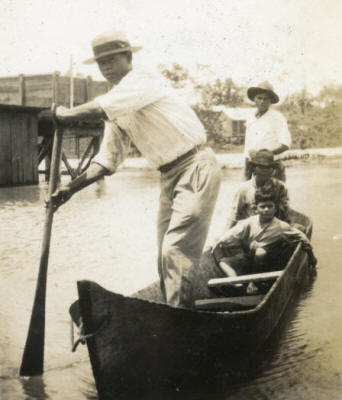 THIS IS THE SIXTH PAGE
of documents for the FIRST HALF of 1931
on Nicaragua's Caribbean Coast
region, housing materials dated in the 13 days from May
8 to 20.
THIS IS THE SIXTH PAGE
of documents for the FIRST HALF of 1931
on Nicaragua's Caribbean Coast
region, housing materials dated in the 13 days from May
8 to 20.
The page opens with a
series of missives between Secretary
of State Stimson, US Minister Hanna,
and the Guardia’s Jefe Director Gen.
Matthews on the feasibility of
providing more troops to protect the
properties of Standard Fruit
Company, and trying to puzzle out
who will pay for it. In the
end, as the exchanges continue here
& on later pages, Standard Fruit
agrees to pay the lion’s share,
essentially buying protection from
the state for its properties on the
Coast. It’s a fascinating case
of an imperial state working
cooperatively with big capital to
promote the geostrategic interests
of the former & the economic
interests of the latter.
But the page’s highlight
has to be the 20-page eyewitness
narrative by Englishman Austin
Murphy, timekeeper at Vacarro Farm,
who was briefly held prisoner by the
rebels during their April offensive
& very nearly executed for being an
American – and probably would have
been, were it not for the
intervention of Blandón himself,
whose garb & personage Murphy
describes in exquisite detail.
Also included here are two of
Sandino’s letters to his highest
officers in the wake of the
offensive, one never before
published. His contention that
his troops did not take Puerto
Cabezas because “no tiene ninguna
importancia para nosotros” is not
convincing – of course he’d have
preferred to have taken the city.
The new Eastern Area Commander Col.
Wynn offers a detailed 7-page report
on the events of April that should
be read in combination with similar
reports on previous pages. The
page’s final document, a complaint
by the Miskitu Indians of Bilwi
against the sindico
appointed by the Nicaraguan
government, makes clear that despite
all the revolutionary violence &
tumult of the previous weeks, the
region’s indigenous peoples remain
focused on the issues of political &
cultural autonomy vis-à-vis the
“Spaniards” of the west, pursuing
the same struggles for communal
rights & cultural dignity that have
engaged them for decades.
|
|
PERIOD MAPS
|
|
1894 mosquito
shore

27 MB,
library of congress
|
1920s
Standard Fruit

6.5 mb,
US National archives
|
1928 Rio wanks
Patrol

3 mb, us
national archives
|
1931 Moravian

2.4 mb,
comenius press
|
|
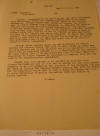
|
8 May 1931
(1800).
Telegram from
Sec. State Henry Stimson,
Washington DC, to US Minister Matthew
Hanna, Managua.
|
|
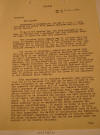
|
8 May 1931
(2000).
Telegram from US
Minister Matthew Hanna, Managua,
to Sec. State Henry Stimson, Washington
DC, p. 1.
|
|
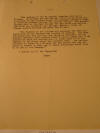
|
8 May 1931
(2000).
Telegram from US
Minister Matthew Hanna, Managua,
to Sec. State Henry Stimson, Washington
DC, p. 2.
|
|
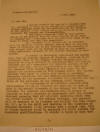
|
8 May 1931.
Letter from Gen.
C. B. Matthews, Jefe Director GN,
Managua, to US Minister Matthew Hanna,
Managua, p. 1.
"8 May 1931. ¶ My
dear Sir: ¶ I return herewith the copy
of a telegram from the Secretary of
State on the subject of a proposed
additional military force for the
protection of the property of the
Standard Fruit Company which you
referred to me yesterday for comment and
recommendation. ¶ I have made a thorough
study of this matter and am of the
opinion that the plan proposed by Mr.
Moss is feasible and I recommend that
the necessary steps be taken to place
his plan into operation. ¶ The Standard
Fruit Company may be informed that the
force of regular guardia now on duty on
the East Coast of Nicaragua and in the
vicinity of the property of that company
will not be reduced as long as the
present total authorized strength of the
Guardia Nacional is maintained. ¶ It
should be thoroughly understood and
agreed upon that all special classes of
guardias, employed as an auxiliary force
in the regular Guardia Nacional will be
required to sign a contract of
enlistment with the Guardia Nacional and
will come under the complete control of
the Guardia Nacional, but in
consideration of the fact that the
Standard Fruit Company furnishes the
funds for the payment and maintainance
of this special force, the Guardia
Nacional will agree to retain this force
on guardian defensive operations and
such limited offensive military
operations as are necessary to protect
the property and the lives of the
employees of the Standard Fruit Company.
¶ The employment of an airplane presents
some difficulties but is believed the
plan can be made to work to the mutual
interest of the company and the Guardia
Nacional. The operator and mechanic will
of course be required to sign a contract
of engagement with the Guardia Nacional
agreeing that all military operation
shall come (under ) the strict control
of the Guardia Nacional. The operator
will be required to be licensed and
satisfy the Jefe Director, G.N. as to
his skill and training in the operation
of military aircraft. It is probable
that a former Army, Navy or Marine
operator could be employed who would
possess the necessary qualifications. It
should be bourn in mind that ¶ -1-
[...]"
|
|
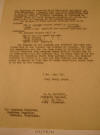
|
8 May 1931.
Letter from Gen.
C. B. Matthews, Jefe Director GN,
Managua, to US Minister Matthew Hanna,
Managua, p. 2.
"[...] the
operation of aircraft is at least very
expensive. In this connection, I suggest
that the State Department take up with
the Navy Department the matter of
authorizing the Commanding Officer,
Aircraft Squadrons in Nicaragua to
furnish bombs and other ordnance
material for use by the plane under the
control of the Guardia Nacional. ¶ The
expense of fifty special guardias will
be as follows:
$20.00 per man
initial outfit of clothing. ¶8.00 “ “ ¶
“ “ “ equipment. ¶ 28.00 X 50= $1400.00
for initial clothing and equipment. ¶
The monthly expense will be ¶ $14.00 pay
per month per man. ¶ 6.20 rations “ “ “
“ ¶ 1.80 clothing “ “ “ " ¶ 22.00 X 50 =
$1100.00 ¶ The figures do not include
any estimate for arms and ammunition or
any expense for housing of guardia. The
arms and ammunition can for the time
being be furnished by the Guardia
Nacional from surplus stock without
charge and it is understood that the
housing will be taken care of by the
company in buildings which they already
have. The rations estimate is based on a
$.20 per day rations and any expense in
excess of that due to local conditions
would have to be met by the company. ¶ I
am, Dear Sir, ¶ Very truly yours, ¶ C.
B. MATTHEWS ¶ Division General, ¶ G.N.
de Nic., ¶ Jefe Director. ¶ The American
Minister,¶ American Legation, ¶ Managua,
Nicaragua."
|
|
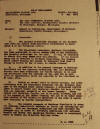
|
8 May 1931.
First Endorsement, Report on Conditions,
Department of Northern Bluefields,
Puerto Cabezas, by Area Commander
Col. C. A. Wynn,
Bluefields, to Jefe Director GN,
Managua.
"FIRST
ENDORSEMENT ¶ HEADQUARTERS EASTERN AREA
GUARDIA NACIONAL ¶ Bluefields, Nicaragua
8 May 1931 ¶ From: The Area Commander,
Eastern Area. ¶ To: The Jefe Director,
Headquarters Guardia Nacional de
Nicaragua, Managua, Nicaragua. ¶
Subject: Report on conditions,
(Department of Northern Bluefields,
Puerto Cabezas, Nicaragua). ¶ 1.
Forwarded. ¶ 2. The present authorized
strength of the Eastern Area does not
permit the distribution recommended in
paragraph 5 of the foregoing letter. ¶
3. The Department Commander, Northern
Bluefields, has been authorized to
enlist thirty (30) of the additional men
recently authorized for the Area. It
will be difficult to obtain that many
(---) year enlistments. If any
enlistment can be obtained in Southern
Bluefields, the Bragman Bluff Lumber
Company has agreed to transport them
free of charge in drafts of ten or more,
to Puerto Cabezas. ¶ 4. In addition to
the present strength of Northern
Bluefields, and the increase authorized,
ten (10) Municipal Guardia have been
authorized for Puerto Cabezas to be paid
and maintained from the proceeds of the
.10 cent tax on each litro of
aguardiente, which was approved by the
president on 20 April 1931. ¶ 5. During
my recent visit to Puerto Cabezas, and
after conferring with the Department
Commander and Mr. Bronson, Manager of
the Bragman Bluff Lumber Company, I
authorized Captain Inman to enlist
twenty (20) Municipal Guardia for duty
at Logtown and vicinity, property of the
Lumber Company. These twenty (20)
Municipal Guardia are to be paid,
clothed, and fed at the expense of the
Lumber Company, but are to be under
absolute control of the Guardia as
specified in the form of agreement
furnished by Guardia Headquarters. ¶ 6.
The present strength of Northern
Bluefields is seven (7) officers
(one-Captain Schwering on leave) and
seventy-one enlisted. With the increases
authorized and when obtained the
strength will be seven (7) officers,
ninety-one (91) enlisted Guardia and
thirty (30) Municipal Guardia which is
considered ample to handle any situation
that may arise. ¶ C. A. WYNN"
|
|
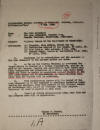
|
8 May 1931.
Military League of the Department of
Bluefields, from Jefe Director GN
Gen. C. B.
Matthews, to Col. C. A. Wynn,
Bluefields.
"References: (a)
Dispatch, this office #09101 May 31, (b)
Resolutions adopted by the League, 28
April, 31 (c) Your letter, this subject,
2 May 1931, (d) Guardia Hdqts. Letter of
Instruction No. 2- 1931, 27 April 1931.
As far as the Guardia Nacional is
concerned the League should be treated
as a social organization, similar to
some of the Leagues, legions and
associations with former military
backgrounds and principles as a basis,
and, while their ardor and offer to
assist in operations against bandits on
the east coast should not be
discouraged, no armed military unit,
other than the Guardia will be
permitted. This headquarters
agrees with the belief of the Area
Commander as to the values of an
auxiliary defensive organization and
expresses the hope that members of the
Military League as individuals will
enlist as "Civicos" for that purpose.
Reference (d) must be applied in each
case. ... /s/ W. Sheard by
direction"
|
|

|
1.
9 May 1931.
"An Eye Witness' Account of Attack of
Sandinista bandits at Moss Farm on April
11, 1931, by
Austin Murphy, Timekeeper of
Vaccaro Farm, Who Was Captured and Held
Prisoner by the Bandits," p. 1. Title
page.
|
|
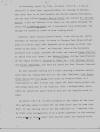
|
2.
9 May 1931.
"An Eye Witness' Account of Attack of
Sandinista bandits at Moss Farm on April
11, 1931, by
Austin Murphy, Timekeeper of
Vaccaro Farm, Who Was Captured and Held
Prisoner by the Bandits," p. 2. "On
Saturday, April 11, 1931, at about 1:30
P.M., I was at switch No 5, Moss Farm,
superintending the loading of bananas,
when news came to me that bandits had
burned Logtown Commissary, and has also
killed Captain Harlan Pefley and wounded
Mr. William Selser. I did not believe it
at first, as the party bringing the
story was a Jamaican negro who I
considered very unreliable, and thought
he wanted to scare us from loading
fruit. ¶ However, about twenty minutes
later, I was told by Mr. Gantz, Overseer
of Vaccaro Farm, to hurry to Vaccaro
Farm House and get away on a fruit train
that happened to be picking up fruit
near there at the time. I went as
directed, threw a few necessary articles
into a grip, boarded the train and
reached Tigne Junction at about 3:00
P.M. where I met Cathey Wilson, Acting
Superintendent of the Tigne District,
William H. Bond, Jr., O.H. (Pinkey)
Wilson and Moises Sagastume, who were
all bound for Port (Puerto Cabezas). ¶
We were delayed waiting for a train
carrying a Guardia detachment that was
coming from Port at the time. Meantime,
J.H. Bryan, Percy Davis, and J.W. Lloyd
were still at D’Antoni Farm, so I
volunteered to take a motor car, after
the fruit train pulled out, and bring
these men to the Junction. This I
accomplished, after which we waited for
about half an hour for the Guardia train
to pass. ¶ At about 5:00 P.M. we were
standing on the tracks at the Junction
getting ready to board the two farm
motor cars to come into Port. It was
raining and we all had raincoats on. I
mention this as these long coats proved
to be a great hindrance to our running a
few minutes later. About five minutes
after the Guardia train . . . "
|
|
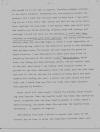
|
3.
9 May 1931.
"An Eye Witness' Account of Attack of
Sandinista bandits at Moss Farm on April
11, 1931, by
Austin Murphy, Timekeeper of
Vaccaro Farm, Who Was Captured and Held
Prisoner by the Bandits," p. 3. "
. . . had passed us on its way to
Logtown, shooting suddenly started, to
our great surprise. Everybody ran, the
majority towards the pasture, but I made
for the mule shed of Moss Farm. I was
bending low as I ran, and a shot stuck
the heel of one of my boots. Upon
reaching the mule shed, I hid myself
under some fruit pads. The bandits ran
along shooting, hurling bombs and
cursing, and although I could not move
nor see anything, I could hear them
chopping up somebody with their
machetes, and firing continuously.
Shortly after the shooting began, I
heard a voice apparently of authority
giving orders to the bandits to pursue
to the woodlands, some distance away,
the people who had composed the group at
Tigne Junction. I was afterwards to
learn that this voice of authority was
that of the bandit leader, Pablo
Blandon. About dusk, the firing and
bomb-throwing ceased, and the bandits
came to the mule shed where I was
hiding. They received orders to proceed
to the Moss commissary, about 300 yards
from the mule shed, and loot it. One of
the men was ordered to bring mules and
pack-saddles for loading the loot. A
patrol was left around the mule shed,
and I heard them say that all roads from
Tigne Junction were guarded by bandits.
¶ About 10:00 P.M. that night, I heard
the Guardia train returning from
Logtown. When the bandits heard the
train they dashed for cover, evidently
near the Moss Trestle nearby. A little
later I heard shooting, and after about
five minutes the Guardia train
retreated, - I suppose to Logtown. ¶ The
bandits then sent a detail to remove
some rails on the trestle and to burn it
while the remainder continued their work
. . . "
|
|
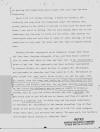
|
4.
9 May 1931.
"An Eye Witness' Account of Attack of
Sandinista bandits at Moss Farm on April
11, 1931, by
Austin Murphy, Timekeeper of
Vaccaro Farm, Who Was Captured and Held
Prisoner by the Bandits," p. 4. "
. . . of packing and dispatching mules
laden with loot from the Moss
Commissary. ¶ About 1:00 A.M. Sunday
morning, I heard two bandits, who
evidently had come from the Commissary
where the General was, giving orders to
two others to proceed to burn down the
mule shed where I was still in hiding.
The two were making their way to the
Commissary for kerosene to carry out the
order, when another one intercepted them
and told them to leave it until morning,
as they needed men to help pack the
mules and take them to Logtown before
dawn. ¶ Nothing further transpired until
daybreak, except that those off duty
were sleeping alongside of me, and from
their conversation it seems that three
of them had been sent to Mr.
Strickland’s house to get him. They
apparently had been severely reprimanded
by General Blandon for their failure to
capture Mr. Strickland, and proceeded to
describe what they would do to Mr.
Strickland if they caught him. They
would, first of all, cut off his ears,
then his hands, then his nose, and
little by little they would cut him to
pieces, and finally stab him. One of
these bandits boasted that he had killed
six different men in machete fights in
Honduras. Another said he also had
killed several men with a machete, and
the third said he had killed two or
three, and they all agreed it would be a
pleasant job, in which they had had
ample experience, to entertain Mr.
Strickland in the manner described. One
of them asked if the fruit train that
had left at 4:00 P.M. with refugees
would reach port, and received the
reply: “No more port, our brothers are
already below waiting to intercept them.
. . . "
|
|
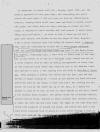
|
5.
9 May 1931.
"An Eye Witness' Account of Attack of
Sandinista bandits at Moss Farm on April
11, 1931, by
Austin Murphy, Timekeeper of
Vaccaro Farm, Who Was Captured and Held
Prisoner by the Bandits," p. 5. "
. . . ¶ At daybreak, or about 6:00 A.M.,
Sunday April 12th, all the bandits
appeared to have gone away, and
everything was quiet around the mule
shed. I did not come out from my hiding
place, however, fearing there still were
some sentinels on guard around the
place, but after about an hour, hearing
no voices nor footsteps, I decided to
crawl outside and look around. If found
everything still and quiet, - so much so
that I stood up and had a good look
around, and failed to see any signs of
life. However, I saw a short distance
away the bodies of several dead. I
figured that with two commissaries
looted and so many people murdered, that
the bandits would now make their way
back to the Wanks River via Logtown.
Presuming this, I went down to where
some of the dead lay (I say “down” as it
was on a downward slope toward the bed
of a creek nearby) with an idea of
making arrangements to carry them to the
railroad track where they would be put
on the Guardia train and carried to
Port. I was leaning over the body of
William H. Bond, Jr. when suddenly a
pistol was shoved into my face, and the
man behind it began cursing me. I stood
up and pushed his hand down and asked
him what he was doing. I then told him I
was looking for his chief. He told me
the Chief was up on the hill, so I asked
the bandit to take me to him. We went to
their ambush on the hill, where I met
General Pedro Blandon. The bandit Chief
was of medium stature, rather heavily
built, dressed in khaki uniform with
leather puttees, a straw hat with red
and black band, the edges of its wide
brim deco- rated with pendants of bright
red balls, and around his neck a red
band black kerchief held in place by a
sea shell through a hole in . . . [two
lines obscured] . . . "
|
|
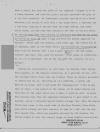
|
6.
9 May 1931.
"An Eye Witness' Account of Attack of
Sandinista bandits at Moss Farm on April
11, 1931, by
Austin Murphy, Timekeeper of
Vaccaro Farm, Who Was Captured and Held
Prisoner by the Bandits," p. 6. "
. . . been a sword, but from the width
of its scabbard I judged it to be a
fancy machete; and from his pistol
holster protruded the grip of a .45 Colt
automatic. He immediately started
cursing me as a hated American, and
wanted to know what I was doing there. I
informed him I had been sleeping at
Vaccaro Farm the night before, had heard
shots fired, and had come down merely to
see what it was all about. He told me
that they were cutting up Americans and
that he was going to cut me up also. He
made a sign and from the ambush appeared
two bandits. These same two bandits,
some years ago, had worked for me. They
told the General that I was a good
“patron”, and had always treated them
well. But, said the General: “That makes
no difference, he is a d—d American”.
One of the two said “No, General, he is
a German”. ¶ During the conversation, we
could hear the Guardia train coming from
Logtown, so the General ordered me, as a
prisoner of war, into the woodland where
their camp was located. There my captors
proceeded to search and rob me,
relieving me of a penknife, a watch, and
$275.00 in money, that I had saved for
“emergencies”. I had no gun then or
later. I was placed in the charge of an
armed orderly and told that at the least
false move I made, I would be shot. In
about five minutes more they had
organized themselves to give fight to
the Guardia, while I concealed myself
behind a large tree. When the Guardia
train came close to the north side of
the Moss Trestle, from which some rails
already had been removed, it came to a
halt and the bandits opened fire, which
was promptly returned by the Guardia.
The latter seemed to have the correct
range as three bandits were killed. . .
. "
|
|
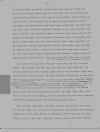
|
7.
9 May 1931.
"An Eye Witness' Account of Attack of
Sandinista bandits at Moss Farm on April
11, 1931, by
Austin Murphy, Timekeeper of
Vaccaro Farm, Who Was Captured and Held
Prisoner by the Bandits," p. 7. "
. . . In taking their position, the
bandits had crawled through the barbed
wire fence separating the woodland from
the pasture, and taken their position on
the edge of the pasture, where there was
little cover. The hotness and accuracy
of the Guardia's fire evidently
surprised them, and they began stumbling
over and cursing each other in their
confused efforts to get back through the
fence and into the woodland again; but
when this melee was at its height the
Guardia train commenced backing away,
the Guardia fire became ineffective and
very soon ceased. Then they succeeded in
getting back through the fence to their
camp again, they decided to retreat from
there. I asked my guard what they were
going to do with their three dead
companions; he answered roughly and with
appropriate epithets that "The buzzards
will take care of them". ¶ We started
through the woodland toward Vaccaro and
D'Antoni Farms. The General led the way,
followed by eight bandits. The second
chief kept about fifty yards behind with
another eight men, and the third chief
about the same distance behind the
second with the remaining fighting men.
I was left in the rear with the Sumu
Indian contigent and a man they called
the "Commandante", who, as I found later
also acted as the General's secretary.
We walked single file and no talking was
allowed. At times when they would hear a
noise or see someone, all would drop
down on their stomachs, and after
waiting about five minutes, proceed
again. ¶ When we had come about opposite
(South) of Vaccaro Farm House we turned
toward it, cleared the woodland, and
entered the bananas, heading for this
Farm House. On arriving, they searched
the Farm House, where I had some
clothing, shoes, camera and other
things. . . . "
|
|
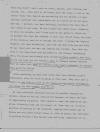
|
8.
9 May 1931.
"An Eye Witness' Account of Attack of
Sandinista bandits at Moss Farm on April
11, 1931, by
Austin Murphy, Timekeeper of
Vaccaro Farm, Who Was Captured and Held
Prisoner by the Bandits," p. 8. ".
. . What they didn't want, such as
books, papers, work clothes, bed linens,
etc., they left to be burned with the
house. I was in the office while this
search was proceeding and one bandit, an
ugly looking cutthroat who undoubtedly
was as vicious as he was ugly, and who,
I believe, had been drinking, conceived
the idea that I was trying to get away.
He was outside the office door.
Suddenly, he drew his machete, and I
knew that he was going to attack me, so
I grabbed the door and slammed it shut.
His thrust drove the point of his blade
an inch or so through the door. I called
for General Blandon, who came
downstairs, and told him what this man
had done. He was vexed with the man and
ordered him outside. They then set fire
to the Farm House and proceeded to the
Vaccaro Commissar. Here, the place had
already been looted by "home talent",
and very little was left for the
bandits. This so enraged General Blandon
that he swore that upon his return every
"mozo" (laborer) on Vaccaro Farm would
be killed. ¶ After gathering up what
they could from this already looted
Commissary, they set this building on
fire also. They also sent a detail to
set fire to some of the nearby houses of
teh disrespectful mozos who had "beaten
them to it". ¶ We then proceeded
southward across the pasture towards the
bananas. After we had all entered the
bananas, we heard the buzz of
approaching airplanes. This seemed to
take the bandits by surprise. Evidently
they did not expect it. From then on it
was a question of getting to the
woodland, dodging from banana mat to
banana mat and under fallen trees. I,
with my guard, was fortunate in getting
beneath a big fallen tree and lying
lengthwise of it. . . . "
|
|
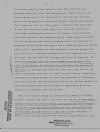
|
9.
9 May 1931.
"An Eye Witness' Account of Attack of
Sandinista bandits at Moss Farm on April
11, 1931, by
Austin Murphy, Timekeeper of
Vaccaro Farm, Who Was Captured and Held
Prisoner by the Bandits," p. 9. "
. . . The planes evidently had sighted
us, for they come down low, dropping
bombs and using their machine guns.
After a while, the planes passed over to
the other side of the railroad, and this
gave us an opportunity to make good
progress toward the woodland. When I
came out from my hiding place, I looked
on the upper side of the log I had been
hidden under, and there were markes of
at least eight machine gun bullets on
it. However, none of the bandits were
injured in this airplane attack. After
coming from under the log and making
some further progress toward the
woodland, we heard the planes coming
over again, and I sought another safe
hiding place, when I was ordered by the
armed guard, who was always with me, to
move on. I objected, telling him that it
was dangerous for us to move just then
and asked him to share with me my hiding
place. My failure to promptly obey his
order enraged him, and while lying prone
on the ground, he struck me a vicious
blow with the butt of his rifle, in the
back just below the ribs and to one side
of the spine, fortunately not where any
bones would be broken. Immediately
thereafter he became alarmed at the
closer approach of the planes, and dived
into the same hiding place with me. We
finally reached the woodland at about
4:30 P.M. Once there, a good hiding
place was found, and we remained there
until dusk. ¶ Here I was told to change
my clothes with a bandit, including my
shoes, which I did. Also I was stood up,
and with a keen-edged machete waving
very near my throat, was told to say
"Viva Sandino". The bandit waving the
machete informed me very convincingly
that at any moment he might decide to
chop off my head. Naturally, I did not
lose any time saying "Viva Sandino", and
although my voice . . . "
|
|
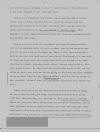
|
10.
9 May 1931.
"An Eye Witness' Account of Attack of
Sandinista bandits at Moss Farm on April
11, 1931, by
Austin Murphy, Timekeeper of
Vaccaro Farm, Who Was Captured and Held
Prisoner by the Bandits," p. 10. "
. . . Was pretty husky, managed to say
it loud enough to be understood. I was
then allowed to sit down and rest. ¶
During this interval, the bandits were
counting their looted money. One of
them, who had $74.00, asked me to show
him the difference between a $2.00 bill
and a $5.00 bill, as he could not read,
and evidently was not accustomed to
having money. They appeared to have
among them about $500.00, this not
including what the General had taken. ¶
During all this time the airplanes had
been hovering around, and it was nearing
dusk. All of a sudden, one of the
bandits came over to me and told me to
stand up, which I did. He then aimed a
blow at me with the butt end of his
pistol. Fortunately, I was able to throw
my head back far enough that only the
bridge of my nose received a slight,
glancing blow, which, though very
painful, did not, knock me out. He then
took the pistol and waved it to and fro
under my nose, and told me he was going
to kill me, and also commanded me
several times to say "Viva Sandino",
which I did as often as was required.
After a time his arm became tired and
this "fun" was over. ¶ Orders were given
by the General to proceed to D'Antoni
Farm, as the airplanes had gone away. We
reached D'Antoni Farm about 7:00 P.M.
that evening, but strange to say, they
did no looting. There was only one small
house here for the farm "mandador" and
as they appeared to be in haste to reach
and loot the Louisiana Farm Commissary,
they may have considered this house not
worthy of their attention. They
conversed with some mozos who
sympathized with them, . . . "
|
|
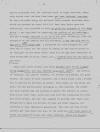
|
11.
9 May 1931.
"An Eye Witness' Account of Attack of
Sandinista bandits at Moss Farm on April
11, 1931, by
Austin Murphy, Timekeeper of
Vaccaro Farm, Who Was Captured and Held
Prisoner by the Bandits," p. 11. "
. . . and we proceeded down the railroad
track to Tigne Junction, where they
burned down the Moss Farm House and some
laborers' quarters. We then proceeded
along the railroad track towards
Louisiana Farm, which was reached at
about 9:30 P.M. Here they broke open the
Commissary, and proceeded to bale up
goods for dispatch to the Wanks River. I
was appointed to supervise the packing
of all medicines, and had a bandit
assigned to me to do the work.
Evidently, with the exception of the
General and his secretary, I was the
only man in the party who could read. I
performed the task assigned to me, and
then had to write out the bills of
lading of the various goods to be
"shipped" to the Wanks River. They did
not pay much attention to such
foodstuffs as flour, beans, etc.,
leaving this for the mozos of the farm.
¶ There were three Chiefs and these
divided some of the plunder among
themselves, and also offered me a small
share, - two bottles of vermouth, two
ladies' dresses, two bottles of perfume,
two good shirts, two pairs of good
trousers, and a fancy alarm clock,
evidently to pay for my services as
packer. They drank all the wines and
beer, the men particularly indulging in
this pastime, the chiefs too busy
supervising the packing of goods. The
bandits on sentry duty would leave their
posts and come into the commissary for
beer and other drinks, and the ones
engaged in packing left their work
frequently to pass out bottles of beer
and other liquors, not omitting to help
themselves generously. The rank and file
of the bandits got very drunk and some
of the sentries left their posts to
enter the laborers' houses and steal
clothing, money and jewelry. . . . "
|
|
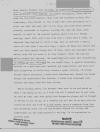
|
12.
9 May 1931.
"An Eye Witness' Account of Attack of
Sandinista bandits at Moss Farm on April
11, 1931, by
Austin Murphy, Timekeeper of
Vaccaro Farm, Who Was Captured and Held
Prisoner by the Bandits," p. 12. "
. . . When General Blandon knew of this,
he threatened a court-martial when we
should reach Logtown. As events
transpired, there was no need for the
court-martial. When they had finished
looting this Commissary, they burned it.
The chiefs then took possession of a
motor car that had been left on the
line, and with their private plunder,
proceeded to Logtown, leaving the rank
and file, with myself, to walk it. We
reached Logtown about 3:00 A.M. Monday
morning, April 13th, and I was told that
I could take a sleep. At daybreak they
decided to catch a hog, kill it and have
a feast, since all the time I was with
them, a piece of bread and cheese had
been our only repast (being full of
beer, wines and pillaged knick-nacks,
they did not seem to be very hungry).
While the hog was being scraped and
dressed, the remaining pack-mules were
dispatched, in charge of Sumu Indians,
for the Wanks River. A special
messenger, mounted on a good mule well
saddled and caparisoned, was also sent
with dispatches in which they claimed a
great victory, of having killed twelve
Americans, looted four Commissaries,
burned two farms houses and annihilated
the Guardia. I think this messenger also
carried the money that had been stolen.
¶ While waiting there, the General came
over to me and asked me what I was going
to do, so I told him all I wanted was to
get away. He told me that they were
going into dangerous places and he
thought it better to let me go, so I
thanked him and was on my way, when he
called me back and told me I had better
carry a passport from him. His secretary
wrote one out and Blandon signed it,
slowly and laboriously as one
unaccustomed to writing. It is
reproduced on another page. . . . "
|
|
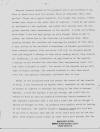
|
13.
9 May 1931.
"An Eye Witness' Account of Attack of
Sandinista bandits at Moss Farm on April
11, 1931, by
Austin Murphy, Timekeeper of
Vaccaro Farm, Who Was Captured and Held
Prisoner by the Bandits," p. 13. "
. . . General Blandon handed me the
passport and I was starting to go, when
we heard once more the ominous drone of
airplanes (Boy, that got'em). There was
a grand commotion. All rushed into
houses. (These houses were close to the
water tank at Logtown). I made my way
quickly southward to the woodland, and
within five minutes more the airplanes
started their bombardment of the
bandits. I could see nothing from where
I was and kept going, my only thought
being to get to safety. My course was in
the direction of Louisiana Farm. After
passing through the woodland and
reaching the bananas of this farm, I
saw, across on the railroad a detachment
of Guardia proceeding on foot towards
Logtown. This was about 9:30 A.M. An
airplane passed over and dropped a
message to them after reading which,
they hurried on. Evidently, it was
information of the location of the
bandits. I walked on and reached the
Louisiana Farm headquarters about 1:00
P.M. Here I decided to await the return
of the Guardia and go with them to
Puerto Cabezas. The Guardia returned to
this Farm about 4:00 P.M. and shortly
thereafter continued back to Port. ¶
While at the Louisiana Farm and before
the return of the Guardia to Port, I was
instructed by Captain Wood, commander of
the Guardia, to return to Logtown to
identify and bring in the body of
General Blandon. I told the Captain I
had had enough, and would like to return
to Port as soon as possible. Lieutenant
Darrah remarked in the Captain's
presence that I had had a hard time and
he tought I should be brought to Port,
as probably more bandits would be
lurking in the district. The Captain
called a Jamaican negro and told him to
go over to Vaccaro Farm and see if he
could find any of the bandits. This
journey would occupy at least forty-five
minutes for the . . . "
|
|
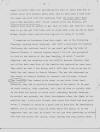
|
14.
9 May 1931.
"An Eye Witness' Account of Attack of
Sandinista bandits at Moss Farm on April
11, 1931, by
Austin Murphy, Timekeeper of
Vaccaro Farm, Who Was Captured and Held
Prisoner by the Bandits," p. 14. "
. . . negro to arrive there not
mentioning the time it would take him to
return (even with bandits after him).
But in less than a half hour the negro
was back with the assurance that "Ah
shuah didn' find none o'fem bandicks,
suh". Lieut. Darrah still was dubious,
but Captain Wood said he wanted to get
back to Port, and told me I would have
to go and get that body, and he would
send a car as far as Snaki Bridge (eight
miles distant from Logtown) to carry it
to Port. ¶ I remained at Louisiana Farm
that night, and on the following
(Tuesday) morning about daybreak, left
with a pack-mule for Logtown (followed
the railroad track) to see about getting
the body of General Blandon. I reached
Logtown about 7:00 A.M. and proceeded to
look at the bodies of the dead bandits,
of which I counted eighteen, and was
standing over the body of General
Blandon, when out of the bush came four
of the bandits who captured me once
more. They asked me what I was doing,
and I told them I was on my way to Sandy
Bay and thence to Puerto Cabezas. The
man who addressed me was second to
General Blandon in command, and his
name, Colonel Jose Navarro. They seemed
quite upset to see their Chief dead.
Evidently they had no previous knowledge
of his death. It is part of their
tactics, when attacked, for a few of
them to quickly hide in the bush and
remain on watch until something further
develops. My arrival was probably the
first development after the fight of the
previous day. I told this Colonel that
since his Chief had been good to me, I
thought it would be a good idea to bury
him. He immediately agreed, but no
shovels could be found about the place,
so it was suggested that the body be
burned. We all got busy gathering up
sticks and wood and burned the corpse,
which already had been partly eaten . .
. "
|
|
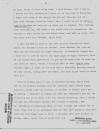
|
15.
9 May 1931.
"An Eye Witness' Account of Attack of
Sandinista bandits at Moss Farm on April
11, 1931, by
Austin Murphy, Timekeeper of
Vaccaro Farm, Who Was Captured and Held
Prisoner by the Bandits," p. 15. "
. . . by dogs. While we were doing this,
I told Navarro that I was in a pretty
bad fix, because if I went out on the
road to Sandy Bay I might meet some of
his people who did not know me, and if I
went back through Louisiana Farm I knew
I would be met by about a hundred
Marines who were now on their way to
Logtown. This information startled him,
and after a few words with his
companions, they decided to make tracks
for the Wanks River, and left me alone.
This was about 9:30 A.M. Tuesday, April
14th. ¶ I then decided to beat my way
down to Port through the woodlands, but
decided I must be careful, since Navarro
had told me they had six sentinels at
Tigne Junction. It therefore seemed that
I must try to work my way to the upper
side of Tigne Junction, back of the
burned Moss Farm House, to get up the
Wawa River in some way and cross it
there, whence I would be able to make
Tungla Farm. Tuesday night, I slept in
the bush and on Wednesday morning
proceeded very slowly, hiding here and
there, and made Tigne Junction about
4:00 P.M. ¶ From my hiding place I saw,
on Thursday morning, April 16th, one of
the bandits walking down the railroad
track toward Tigne Junction, armed with
two pistols, so decided to remain quiet
and in hiding. I remained in hiding all
that day (Thursday) and all the
following day until about 2:00 P.M.
Friday afternoon, when I looked out and
saw Lieutenant Cursey [Curcey] with a
squad of Guardia, and Mr. Beardsley
accompanying them, so took courage and
walked out to them. They told me to
accompany them as they were going to
Louisiana Farm and then right back to
Port. I returned with them to Port on
Friday night, April 17th at about 8:00
P.M. . . . "
|
|
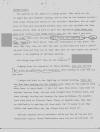
|
16.
9 May 1931.
"An Eye Witness' Account of Attack of
Sandinista bandits at Moss Farm on April
11, 1931, by
Austin Murphy, Timekeeper of
Vaccaro Farm, Who Was Captured and Held
Prisoner by the Bandits," p. 16. "
. . . ¶
OBSERVATIONS: ¶ The bandits do
not fight in a large group. They send
out six or eight men and commence
fighting, and as soon as the Guardia
replies, they cease firing and return to
the woodland. Meantime, six or eight
more of them have proceeded further back
into the woodland and fire several
shots. This is done to give the
impression that there are many more
bandits than there really are. All the
time I was with this gang, there were
actually only twenty two fighting men
and ten Sumu Indians in their party.
They are continually on the march. The
only time they come out into the open is
when they are sure a patrol is past them
and they can do what they have in view
before the patrol's return. I am
speaking of railroad patrols. ¶ The
thing they DON'T like is the airplane. ¶
Judging from the character of these
bandits, they are nothing but a lot of
cutthroats and murderers, with nothing
to lose and all to gain. ¶ I might add
that in the fighting on Sunday morning,
three men who had been working for the
Company were taken by the bandits from
Moss Farm, to help fight. I have not
seen them since. Also when we reached
Vaccaro Farm, two men were brought from
D'Antoni Farm, and when through looting
and burning the farm buildings, the
bandits sent them back to D'Antoni Farm.
Thus, as regards men, they have no
difficulty in getting all they want, but
it seems to me that rifles and
ammunition are the things they are most
short of. ¶ General Blandon had an
automatic rifle and ten of the men had
Winchester rifles. These Winchesters
were the now out-of-date .38 . . . "
|
|
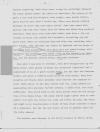
|
17.
9 May 1931.
"An Eye Witness' Account of Attack of
Sandinista bandits at Moss Farm on April
11, 1931, by
Austin Murphy, Timekeeper of
Vaccaro Farm, Who Was Captured and Held
Prisoner by the Bandits," p. 17. "
. . . caliber repeating, hand lever
arms, using the cartridges designed for
black powder before the advent of
smokeless. The others of the party I was
with had shotguns, some single, some
double barrel, about half of each kind I
should say. These were breech loading
shotguns in which they used brass
shells. Some were armed with pistols
that had been stolen from the Farms and
taken from murdered Americans. They also
carry home-made bombs, made from a tin
can (tomato or fruit tin) packed with
dynamite, detonating cap and short fuse.
While at Louisiana Farm and they were
searching laborers' houses, they
obtained ten sticks of dynamite and two
boxes of caps. The Sumu Indians with
this gang were not armed (except with
machetes) and evidently were taken along
in the capacity of laborers. All the
bandits carried keenly sharpened
machetes. ¶ From what I was able to
overhear, they have headquarters up the
Wanks River, with plenty of farms and
"potreros" (pastures) and I understand
it is at a place called Tilba, not far
from the Honduran border, and about a
hundred miles by river from Saclin. They
have recently cut trails which probably
would shorten the distance to about
sixty miles. It has been stated that the
rainy season now approaching will
preclude further attacks. I doubt this.
The chief difficulty they would find in
the rainy season would be the navigation
of the Wanks River. The rainy season
might hinder them to some extent, but
with new trails cut, they can travel by
land, and while mud might be an
inconvenience, I doubt if they would
consider it much of a hindrance. And why
the new trails if not to prepare ahead
for the rainy season? ¶ The bandits were
dressed in old dirty trousers of khaki,
drill, . . . "
|
|
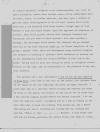
|
18.
9 May 1931.
"An Eye Witness' Account of Attack of
Sandinista bandits at Moss Farm on April
11, 1931, by
Austin Murphy, Timekeeper of
Vaccaro Farm, Who Was Captured and Held
Prisoner by the Bandits," p. 18. "
. . . or similar material, original
color undeterminable, any sort of shirt
available, native hard leather shoes,
dirty widebrimmed hats of straw, fiber,
or similar material, and each wore a
hatband of red and black (some appeared
to be all red). Around their necks they
wear a red kerchief with black border.
Upon the approach of airplanes of
Guardia, they would quickly remove this
insignia (hatband and kerchiefs) and put
same in their pockets. Also when sending
a message, the messenger would remove
his insignia and go unarmed like any of
the farm laborers might go, to divert
suspicion of him being a bandit. Their
spies and messengers carry neither
insignia nor weapons nor anything to
indicate their character or mission and
in all probability there are several of
them in Port and on the farms. Having
this in mind care should be taken in
telephone conversations on the line, and
in conversation in the presence of any
one, even children. ¶ The bandits had a
boy, presumably a son of one of the
laborers of Moss Farm, with them at the
time of the attack, who informed them of
the names of the men composing the group
of Tigne Junction. I could hear him in a
childish treble telling the bandits the
names of those in the party, and believe
he was one of two or three boys I had
noticed hanging around before the attack
occurred. I do not know his name nor
could I recognize him as I was in hiding
in the mule shed when I heard him
talking. They missed me, and I heard
them going all about, shouting and
looking for me, cursing and yelling:
"Where is that ---- ---- ---- Murphy". I
also heard them yelling and asking
profanely for Cathey Wilson and James W.
Lloyd, . . . "
|
|
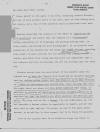
|
19.
9 May 1931.
"An Eye Witness' Account of Attack of
Sandinista bandits at Moss Farm on April
11, 1931, by
Austin Murphy, Timekeeper of
Vaccaro Farm, Who Was Captured and Held
Prisoner by the Bandits," p. 19. "
. . . who made good their escape. ¶
Every bandit in the party I was with,
excepting General Blandon, had one or
more machete scars on his face, most of
them having several scars, and a few of
them numerous scars crisscrossed over
each other. ¶ Blandon described the
laborers of the farms as "slaves of the
d--d Americans" and stated that the
Company is a "bloodsucker" taking
everything out of Nicaragua and putting
nothing back, in other words, exploiting
the poor Nicaraguans". It is believed
some emissaries of the Sandinistas are
among the farm laborers preaching this
stuff, to gain recruits for the bandits
and perhaps foment a strike, and after
this coming pay-day it is not improbable
that a few laborers may show up missing,
who are now waiting only for their pay.
¶ Blandon stated that the main object of
the bandits under his command was to
keep the Company from operating by
repeated harrying tactics, making sudden
forays upon the farms so as to keep
everyone in a state of nervousness and
uncertainty, never knowing when trouble
might start nor where and KILL EVERY
AMERICAN THEY COULD, in addition to
looting and destroying American
property. There is no question but that
the bandits are after American[s] and
American property. Why they took me for
a German I do not understand, as I do
not resemble a German either in
appearance or speech, and am very much
what my name implies. Of course, no one
in the party spoke German, so my ability
in that respect had to be taken for
granted. ¶ I am of the opinion that if
no effective steps are taken to . . . "
|
|
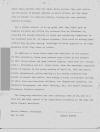
|
20.
9 May 1931.
"An Eye Witness' Account of Attack of
Sandinista bandits at Moss Farm on April
11, 1931, by
Austin Murphy, Timekeeper of
Vaccaro Farm, Who Was Captured and Held
Prisoner by the Bandits," p. 20. "
. . . drive these bandits from the Wanks
River section they will follow out the
plans of General Blandon as above
stated, and the farms will be subject to
surprise attacks, looting and very
probably further killings. ¶ For a
future attack, it is my guess that they
might pass up Logtown entirely and
strike the railroad line at Kilometer
43, crossing the nearby savannah at
night and concealing themselves in the
woodland near Km. 43 before daybreak.
This could be accomplished without any
one else having knowledge of their
approach or of their presence until they
chose to strike. ¶ In addition to those
whose names are mentioned in the caption
of this narrative, three more persons
were killed by the bandits on this foray
before the gang reached Logtown. They
were J.P. Phelps, John L. Pennington and
H.P. (Rip) Davis, whom the marauders
surprised North of Logtown early in the
morning of April 11, 1931 and
mercilessly slaughtered, giving warning
to all nearby residents that burial be
denied the bodies; thus making a total
of fourteen victims, of which nine were
American citizens, one (Sagastume)
Honduran, one (Ramirez) Nicaraguan, and
three (Manning, May, and Roper)
Jamaicans, therefore, British subjects.
¶ The foregoing narrative has been
carefully read by me, and is a true and
faithful report of my experiences
occurring on the days and dates therein
mentioned. ¶ Puerto Cabezas, Nicaragua,
May 9, 1931 ¶ AUSTIN MURPHY"
|
|
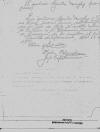
|
21.
9 May 1931.
"An Eye Witness' Account of Attack of
Sandinista bandits at Moss Farm on April
11, 1931, by
Austin Murphy, Timekeeper of
Vaccaro Farm, Who Was Captured and Held
Prisoner by the Bandits," p. 21. [facsimile
of safe conduct pass issued to Austin
Murphy by Gen. Pedro Blandón]
|
|
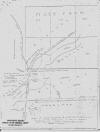
|
22.
9 May 1931.
"An Eye Witness' Account of Attack of
Sandinista bandits at Moss Farm on April
11, 1931, by
Austin Murphy, Timekeeper of
Vaccaro Farm, Who Was Captured and Held
Prisoner by the Bandits," p. 22. "MAP
OF TIGNE JUNCTION & IMMEDIATE
SURROUNDINGS TO ILLUSTRATE NARRATIVE OF
AUSTIN MURPHY. ALSO SHOWING LOCATIONS
(APPROXIMATE) WHERE BODIES FOUND"
|
|
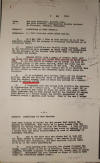
|
9 May 1931.
Conditions at Cabo Gracias.
Area Commander
Col. C. A. Wynn, Bluefields, to
Jefe Director GN, Managua.
"1. On 5 May 1931
I flew to Cabo Gracias in one of the
amphibian planes for the purpose of
obtaining information as to conditions
there. ¶ 2. Normal conditions are
rapidly being resumed. Most of the
inhabitants have returned to their homes
and occupations and the presence of the
Guardia have given them a feeling of
confidence and safety. ¶ 3. ABRAHAM
RIVERA with a group of between forty
(40) and sixty (60) men raided and
looted Cabo Gracias on 14-15 April 1931.
No one was killed or harmed and no
damage was done to buildings except at
the radio station, where the radio was
put out of condition by destruction of
the set. The radio operator has
not returned to Cabo Gracias but it is
believed that he will return as soon as
the necessary spare radio parts are
received. ¶ 4. It is estimated that
between eight and ten thousand dollars
($8,000 and $10,000) worth of
merchandise was taken from the several
stores, part of which was covered by a
receipt signed by ABRAHAM RIVERA.
¶ 5. I discussed with the acting Jefe
Politico the question of organization of
a civico unit. He thought that eight (8)
or ten (10) reliable men could be found
who would join such a unit. Other
prominent men in town stated that it was
doubtful if anyone would enlist as a
civico unless the Guardia guaranteed to
permanently retain a guardia post there.
None of the men I talked with were
willing to enlist for the reason that
should the guardia be withdrawn, they
would be in grave danger from the
bandits for having cooperated with the
Guardia. I feel certain that no more
than ten (10) reliable men could be
induced to join a civico unit and their
effectiveness in case of emergency is
extremely doubtful. ..."
|
|
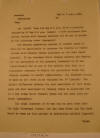
|
9 May 1931
(1300).
Telegram from US
Minister in Managua
Matthew Hanna
to Sec. State Henry Stimson, Washington,
p. 1.
"... For
reasons apparently unknown to Colonel
Wynne [sic] it will not be practicable
to increase the Guardia at Puerto
Cabezas with Guardia forces elsewhere on
the East Coast. If the Standard Fruit
Company desires the Guardia for
protection of its property increased by
50 men (and we are of the opinion that
this is a reasonable increase to obtain
the protection which the Company appears
to desire), the increase should be made
as set forth in my telegram no. 67.
The total increase of 50 men can be sent
from here via Lake Nicaragua, the San
Juan River and the East Coast as soon as
this matter is definitely settled.
These"
|
|
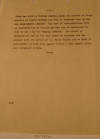
|
9 May 1931
(1300).
Telegram from US
Minister in Managua
Matthew Hanna
to Sec. State Henry Stimson, Washington,
p. 2.
"These men
will be trained Guardia ready for
service on their arrival at Puerto
Cabezas and will be replaced here by new
enlistments. The cost of transportation
will be approximately 20 dollars per man
and we understand it will by paid by the
company. The hazard of transporting men
to the East Coast by airplane has
increased with the advent of the rainy
season and we deem it undesirable to
take this hazard unless a more urgent
military situation arises. Hanna"
|
|
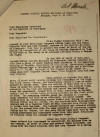
|
9 May 1931.
Letter from Gen.
C. B. Matthews, Jefe Director GN,
Managua, to Most Excellent Mr. President
José María Moncada, Managua, p. 1.
"CUARTEL GENERAL
GUARDIA NACIONAL DE NICARAGUA¶ Managua,
Mayo 9, de 1931. ¶ Most Excellency
President of the Republic of Nicaragua.
¶ Your Despatch: ¶ Most Excellent Mr.
President:= ¶ It is highly honorable
that I recommend to your Excellency
Sergeant Adrian Saenz and the Rasos
Felicito Cruz and Levy Pinnock, members
of the Guardia Nacional of Nicaragua,
that they be granted the Medal of Merit
of the Republic, in recognition of the
value of heroism displayed by them in
the face of the enemy in an enclosed
position during a desperate fight. ¶ On
the 11th of April of this year, Captain
Pefley Guardia Nacional de Nicaragua,
having received notice that a group of
sixty bandits were marauding in the
immediate vicinity of Logtown,
Department of Bluefields , immediately
cleared Puerto Cabezas with a Detachment
of seven Guardias and a civilian named
W. Y. Selzer, employed by the Bragman
Bluff Lumber Co., among whom were
sergeant Adrian Saenz, Raso Felicito
Cruz and Raso Levy Pinnock. ¶ Upon
arrival at Logtown they met a group of
about sixty bandits looting the
Commissary of the Bragman Bluff Lumber
company, and immediately formed a line
of skirmishers to attack them. Upon the
arrival of this line to a distance of
about 200 yards from the commissary, the
bandits being concealed in the bush and
beneath and behind the buildings around
the commissary, opened fire on them,
resulting in Captain Pefley, and Mr.
Selzer being mortally wounded, in the
first burst of fire. The remaining
Guardias under the command of Sergeant
Saenz answered the fire in an efficient,
and brave manner. The bandits with an
overwhelming number rushed out, trying
to capture Captain Pefley and Mr.
Selzer, but the Guardias with
distinguished bravery and in a vigorous
burst of well directed fire forced them
to retire into the bush. The bandits
advanced and attacked strongly for the
second time with the same intention of
capturing Captain Pefley and Mr. Selzer,
but they were driven back each time by
the strong resistance and determined
valor from this small detachment of
Guardias under the command of Sergeant
Saenz. ¶ After the third attempt
Sergeant Saenz ordered his detachment to
concentrate the maximum fire on the
bandits, in order to cover and protect
their movements, and along with the
Rasos Felicito Cruz and Levy Pinnock in
a daring [...]"
|
|
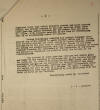
|
9 May 1931.
Letter from Gen.
C. B. Matthews, Jefe Director GN,
Managua, to Most Excellent Mr. President
José María Moncada, Managua, p. 2.
"[...] -2-
…displayed valor they safely withdrew
outside and saved Captain pefley; and
without measure of the risk involved
these three brave guardias safely
withdrew for the second time and saved
Mr. Selzer, both rescuers executed in
the face of overwhelming fire of an
overwhelming number of bandits. Having
determingly achieved his purpose
Sergeant Saenz ordered one of his number
to carry Captain Pefley and Mr. Selzer,
both mortally wounded but still living
to Puerto Cabezas, sending information
at the same time to Lieutenant Darrah of
the event and asking for reenforcements,
and with a small contingent of troops
remained covering the retirement of the
evacuation of the wounded and heroically
sustained his position until the arrival
of the reenforcements. ¶ The actions of
these guardias reflects and exalts glory
and honor to the Republic of Nicaragua
and to the Guardia Nacional for which
all the sons of Nicaragua should feel
proud, and should profoundly appreciate
the services for these faithful and
loyal servants of the government,
services that were incomparably above
and beyond the call of duty of a
soldier, for this, I repeat my
recommendation that they be decorated by
your Excellency with the Medal ofMerit
of the Republic. ¶ Respectfully yours
Mr. President ¶ C. B. MATTHEWS"
|
|

|
10 May 1931
(1020).
Radiogram from Jefe Director GN
Gen. C. B.
Matthews, Managua, to Jefe de la
Guardia Bluefields.
"TROPICAL RADIO
TELEGRAM ¶ TO JEFE DE LA GUARDIA
BLUEFIELDS 10 May 1931. ¶ INFORMATION
HAS BEEN RECEIVED FROM STATE DEPARTMENT
THAT YOU HAVE INFORMED THE STANDARD
FRUIT COMPANY OF PUERTO CABEZAS THAT YOU
WOULD INCREASE GUARDIA THERE BY TWENTY
NINE REGULAR GUARDIAS IF THE COMPANY
WOULD PROVIDE FUNDS FOR MAINTENANCE OF
TWENTY ONE ADDITIONAL GUARDIAS PERIOD
ADVISE FROM WHAT POSTS YOU INTEND TAKING
THE MEN FOR THIS PURPOSE PERIOD DO
NOTHING FURTHER REGARDING THE MATTER
UNTIL FURTHER ORDERS FROM HERE PERIOD
HAVE ADVISED AMERICAN MINISTER GUARDIA
WILL ACCEPT PROPOSITION MADE BY STANDARD
FRUIT COMPANY TO MAINTAIN FIFTY
ADDITIONAL GUARDIA AND ONE AIRPLANE
PERIOD DETAILS OF THE PLAN WILL BE
FORWARDED UPON COMPLETION OF
NEGOTIATIONS WITH GOVERNMENT PERIOD
MATTHEWS 10210 MAY 31. ¶ Walter G.
Sheard, ¶ by direction."
|
|
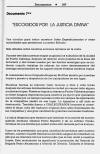
|
10 May 1931.
CIRCULAR PARA TODOS NUESTROS JEFES
EXPEDICIONARIOS,
Gen. Augusto C. Sandino, Cuartel
General del EDSN, p. 1.
(SOURCE:
Alejandro Bendaña,
La mística de
Sandino,
p. 187) "... Más
detalles sobre nuestras acciones en la
costa. ¶ Durante tres días
nuestras tropas ocuparon los suburbios
de la ciudad de Puerto Cabezas, despues
de destruir cinco puentes de la línea
del ferrocarril y dos trenes usados por
las fuerzas enemigas que se rindieron
cuando trataban de reforzar los otros
destacamentos del enemigos atrincherados
en los lugares donde estaban nuestras
tropas. ¶ El comisariato de
la Compañía Bragman Bluff fue abierto
por nuestras tropas y puesto a
disposición de los trabajadores de ese
lugar. ¶ Nuestras fuerzas se
tomaron Cabo Gracias a Dios y ocho horas
despues los aviones bombardeaban la
ciudad sin causar dano alguno a nuestras
tropas. Nuestras tropas no
atacaron Puerto Cabezas porque no tiene
ninguna importancia para nosotros ya que
lo que queríamos era controlar por un
tiempo necesario todos los campos de
explotación de la compañías yankis en
ese lugar. Lo logramos y alli todo
es destrucción. Tambien fueron s
CHALEQUEADOS doce altos funcionarios de
las companías y una gran cantidad de
guardias nacionales traidores. ¶
La única desgracia que tenemos que
lamentar es la muerte de nuestro querido
hermano General Pedro Blandón y de su
sobrino Tomás, víctimas de una bomba que
estalló sobre ellos lanzada por los
aviones. ..."
|
|
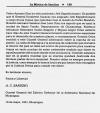
|
10 May 1931.
CIRCULAR PARA TODOS NUESTROS JEFES
EXPEDICIONARIOS,
Gen. Augusto C. Sandino, Cuartel
General del EDSN, p. 2.
(SOURCE:
Alejandro Bendaña,
La mística de
Sandino,
p. 188) "... Es
posible que el General Humberto Caracas
sea asignado Jefe Expedicionario a cargo
de las tropas que operaban bajo el mando
de Pedro Blandón. ..."
|
|
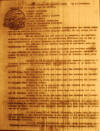
|
10 May 1931.
Letter from Gen.
Augusto C. Sandino, Cuartel
General del EDSN, to Señores Generales
Carlos Salgado, Miguel Angel Ortez y
Guillen, José Leon Diaz y Coronel
Perfecto Chavarria, Campo de Operaciones
Militares.
(SOURCE:
NA127/E38/Box 30, photocopy of original,
first page only.) "Queridos
hermanos: ¶ En esta misma
nota me permito contestarles las cuatro
suyas que se han servido enviarnos a
este Cuartel General, de las cuales nos
hemos impuesto detenidamente. ¶
En los momentos que les escribo la
presente, nos sentimos altamente
ocupados, en
virtud de los movimientos militares que
se han estado desarrollando en estos
momentos en nuestro Costa Atlantica.
¶ Sin embargo, no he
querido dejarles de contestar para
manifestarles lo siguiente: ¶
En atencion al gran exito alcanzado por
nuestras columnas en gira militar por
nuestra Costa Atlantica, se ha
dispuesto; extender el asenso de General
de Divicion, al hermano General de
Brigada, Pedro Altamirano. ¶
Tambien se há dispuesto reconoser por
numeros a nuestras diferentes columnas
expedicionarias, y las que responderán
en el orden siguiente: ¶
Columna No 1, es la que opera bajo las
ordenes del General de Divicion, Pedro
Altamirano. ¶ Columna No 2
General de Divicion Carlos Salgado.
¶ Columna No 3 . . . General de
Brigada Pedro Antonio Irias. ¶
Columna No 4 . . . General de Brigada
Miguel Angel Ortez y Guillen. ¶
Columna No 5 . . . General de Brigada
José Leon Diaz. ¶ Columna No
6 . . . Coronel Efectivo Abraham Rivera,
sobre el Rio Coco. ¶ El
Coronel Perfecto Chavarria, está
ordenado por esta Jefatura Suprema de
nuestro Ejercito, a reconsentrarse a
este Cuartel General, despues de haber
entregado las armas al General José Leon
Diaz o en el Reten de el Ojoche. ¶
En otro caso, si el Coronel Chavarria,
siente pena de regresar desarmado a este
Cuartel General, en ese caso, se le
deberá de permitir de que se reconsentre
a la mayor brevedad posible, a este
Cuartel General de nuestro Ejercito.
¶ Con los numeros mencionados
anterior serán denominadas nuestras
columnas expedicionarias, por lo que se
ordena a todos nuestros Jefes
expedicionarios . . ."
|
|
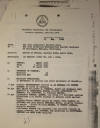
|
1.
11 May 1931.
Record of Events, Eastern Area, April
1931. Col.
C. A. Wynn, Bluefields, to Jefe
Director GN, Managua, p. 1.
"
|
|
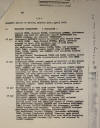
|
2.
11 May 1931.
Record of Events, Eastern Area, April
1931. Col.
C. A. Wynn, Bluefields, to Jefe
Director GN, Managua, p. 2.
|
|
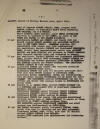
|
3.
11 May 1931.
Record of Events, Eastern Area, April
1931. Col.
C. A. Wynn, Bluefields, to Jefe
Director GN, Managua, p. 3.
|
|
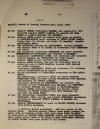
|
4.
11 May 1931.
Record of Events, Eastern Area, April
1931. Col.
C. A. Wynn, Bluefields, to Jefe
Director GN, Managua, p. 4.
|
|
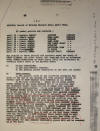
|
5.
11 May 1931.
Record of Events, Eastern Area, April
1931. Col.
C. A. Wynn, Bluefields, to Jefe
Director GN, Managua, p. 5.
"...
INTELLIGENCE. 1. The general state
of the territory occupied, was quiet at
the end of the period, but with possible
threat of another raid on CAPE GRACIAS
from HONDURAS on the NORTH. 2.
Military Situation: There are no known
active bandit grups in the Area, proper,
but it is believed that the withdrawn
bandit forces are now at BOCAY with
captured supplies from commissaries.
It is also believed that a part of
ABRAHAM RIVERA group are in HONDURAS,
NORTH of CAPE GRACIAS. It is the
opinion of the Area Commander that
ADOLFO COCKBURN, the so called "King of
the Coco River Indians", and probably
justly termed, was an active agent and
participant for and with the invading
bandits; that his control and activity
over the Indians in the SACLIN region,
was, alone, responsible for the BLANDON
force to actually reach, sack and burn
LOGTOWN without Guardia knowledge of his
approach. With the increased
strength of Guardia and Municipal
Guardia in PUERTO CABEZAS, the
establishment of small Guardia Post at
CAPE GRACIAS, and the approach of the
rainy season, it is not considered
probable that further immediate
demonstration will be made on the East
Coast towns, with the exception of CAPE
GRACIAS, where bandit raid is only
barely probable. It is considered
probable that raids will continue on
small Indian settlements in SACLIN
vicinity of the COCO RIVER, but that
ADOLFO COCKBURN'S stores will not be
touched as in the past."
|
|
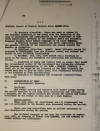
|
6.
11 May 1931.
Record of Events, Eastern Area, April
1931. Col.
C. A. Wynn, Bluefields, to Jefe
Director GN, Managua, p. 6.
|
|
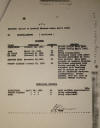
|
7.
11 May 1931.
Record of Events, Eastern Area, April
1931. Col.
C. A. Wynn, Bluefields, to Jefe
Director GN, Managua, p. 7.
|
|
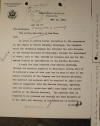
|
11 May 1931.
Letter from Asst.
Sec. State Francis White to
Acting Sec. of Navy Charles Francis
Adams III, Washington DC, p. 1.
"DEPARTMENT OF
STATE ¶ WASHINGTON ¶ May 11, 1931. ¶ The
Honorable ¶ The Acting Secretary of the
Navy. ¶ Sir: In order to afford better
protection to its properties in the
region of Puerto Cabezas, Nicaragua, the
Standard Fruit and Steamship Company has
informed the Jefe Director of the
Guardia Nacional of Nicaragua, through
the Department of State, that it will
furnish an airplane and pay for the
upkeep thereof if satisfactory to the
Guardia Nacional. ¶ A reply has been
received from General Matthews, through
the American Legation in Nicaragua,
saying that it is believed a plan of
this sort can be made to work to the
mutual interests of the Company and the
Guardia Nacional. The operator and
mechanic will be required to sign a
contract of engagement with the Guardia
Nacional, agreeing that all military
operations shall come under the strict
control of the Guardia Nacional. The
operator will be required to be licensed
and satisfy the Jefe Director as to his
skill and training in the operation of
military aircraft."
|
|
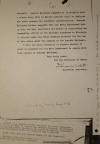
|
11 May 1931.
Letter from Asst.
Sec. State Francis White to
Acting Sec. of Navy Charles Francis
Adams III, Washington DC, p. 2.
"[...] -2- ¶
aircraft. General Matthews suggests it
is probable that a former Army, Navy or
Marine operator could be employed who
would possess the necessary
qualifications. General Matthews further
suggests that the State Department take
up with the Navy Department the matter
of authorizing the commanding officer of
the aircraft squadrons in Nicaragua to
furnish bombs and other ordnance
material for the use of this plane under
the control of the Guardia Nacional. ¶ I
have the honor therefore to inquire
whether it would be possible for the
Navy Department to comply with this
request of General Matthews. ¶ Very
truly yours, ¶ For the Secretary of
State: ¶ (signed) Francis White ¶
Assistant Secretary"
|
|
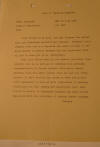
|
13 May 1931
(1800).
Telegram from
Sec. State Henry Stimson,
Washington DC, to US Minister Matthew
Hanna, Managua.
"Your 73 May 12
12 noon. You may discuss the
matter with the Nicaraguan authorities.
Standard Fruit Company asks that you
expedite the early arrival of
reenforcements at Puerto Cabezas and the
Department will be glad to have you do
so. ¶ Moss just before
sailing for Mexico yesterday telegraphed
that he is advised by Brownson his
personal representative at Puerto
Cabezas that rainy season probably will
not start before June 1st and his frank
opinion is that bandits are known to
have sufficient river equipment to move
at will regardless of weather conditions
and that rumors are persistent that they
intend to return in increased numbers
and with better equipment with the
intention of taking Puerto Cabezas.
Stimson."
|
|
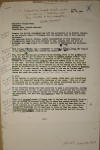
|
15 May 1931.
Petition for
removal of Sindico Gladston Bilbans,
from
Salbador, Ester Fedrico, Letie
Ferderico, Godfrey Williams, Cebard
Salvador, Casimiro Fauch (?) of The
Miskito Indian Community of Bilwi, Nic.,
to the Honorable Colonel Wynn,
Commander, Eastern Area, Guardia
Nacional, Bluefields, Nic., p. 1.
[with extensive
marginal commentary by D. C. Brooks.]
"Because the British Government has left
the protection of us Miskito Indians, on
the Atlantic Coast of Nicaragua into the
especial care of your American
Government. ¶ The undersign
Miskito Indians, lawful representatives
of this Community of Bilwi, humbly comes
into your presence to day, praying that
you give us audience; and hear us pour
out a small portion of our present day
grievance, to wit: ¶ This
village of Bilwi, has a headman who is
called a Sindico, after the fashion of
the spanish element, who created him
Sindico. ¶ Now, this man was
not put into office by us Indians, whose
is the prerogative to do so, but was put
in office by a bunch of spanish element
to suit their
political views. This
Sindico in question is not a resident of
Bilwi. He belongs to a village
called, Krukira
(20) miles twenty miles to the north of
our town. The Bilwi Indians do not
want him here, because the very fact of
him not being one of us, he is against
us, we are asking you to have the matter
so adjusted with the Governor of
Bluefields that this Sindico,
Gladston
Bilbans, be at once removed, and be
replaced by the man we Indians want,
because he is daily taking our
birthright away from us, which the Lord
of Heaven and earth has given us.
¶ To with: He has unknown to
us, Bilwi people, just leased, taken
away, and transferred to one, Pio
Arguello, twenty-five Hectareas of our
lands. This lot of land is
including all of our past, present, and
future plantations and all land
cultivatable for the future; for a term
of ten years. ¶ We are
therefore asking your high authority to
make a proclaimation, stating to the
world, and all who it may concern, that
the plantations and cultivation land
belonging to us Miskito Indians are
looked upon as sacred ground, and not
negociable, and that this
Pio Arguello's
deal is cancelled, and is none effect.
¶ There is a
Covenant
extant, a treaty
made by England and Nicaragua, in which
much protection is promised to us, but
36 years has passed and until this day,
we are sorry to recall the fact that not
a thing has been done for us; on the
contrary we are suffering, and in danger
of our lives. We Miskito Indians
are clamoring for the Americans to sever
us from our bonds, from this Nicaraguan
yoke, give
us as before our reservation, and hold
the sole rights of
protectorate
given by us. ..."
|
|

|
15 May 1931.
Petition for
removal of Sindico Gladston Bilbans,
from
Salbador, Ester Fedrico, Letie
Ferderico, Godfrey Williams, Cebard
Salvador, Casimiro Fauch (?) of The
Miskito Indian Community of Bilwi, Nic.,
to the Honorable Colonel Wynn,
Commander, Eastern Area, Guardia
Nacional, Bluefields, Nic., p. 2.
" ... ¶
Dear Sir: we pray, that you take this
serious matter in all its details
seriously into your high, and esteem
consideration and as quick as your
highness find it opportune for our
welfare, we humbly ask that you remember
us with an answer (especially we pray
you) for the settlement of the Sindico
Gladston Bilbans. ¶ We are
your most humble petitioners, The
Miskito Indians." [six signatures]
|
|
|
|
|
PREVIOUS
NEXT
|
|
|
|
|
|
|
|

